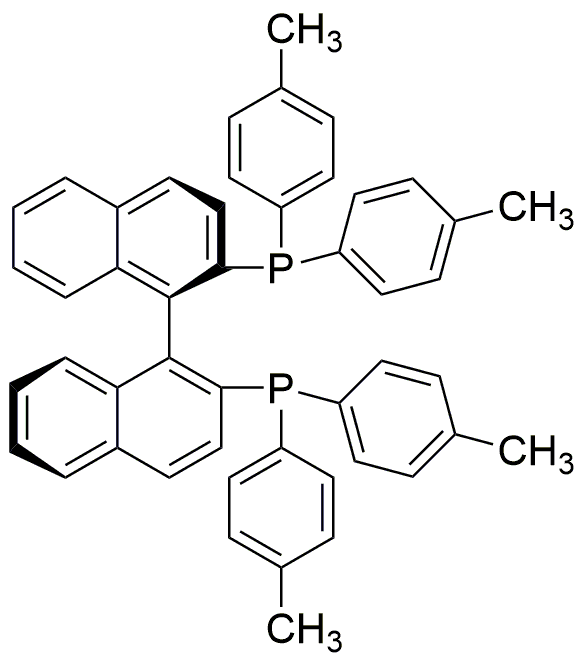(R)-(+)-TolBINAP is widely utilized in research focused on:
- Asymmetric Catalysis: This compound serves as a chiral ligand in various catalytic reactions, enabling the synthesis of enantiomerically pure compounds, which is crucial in pharmaceuticals.
- Pharmaceutical Development: Its ability to facilitate selective reactions makes it valuable in the development of new drugs, particularly in creating complex organic molecules with specific stereochemistry.
- Material Science: (R)-(+)-TolBINAP is used in the design of advanced materials, including polymers and nanomaterials, where precise molecular arrangement is essential for desired properties.
- Organic Synthesis: Researchers leverage this compound to enhance reaction efficiency and yield in organic synthesis, making it a preferred choice for chemists looking to optimize their processes.
- Environmental Chemistry: Its applications extend to green chemistry initiatives, where it aids in developing more sustainable and less hazardous chemical processes.
General Information
Properties
Safety and Regulations
Applications
(R)-(+)-TolBINAP is widely utilized in research focused on:
- Asymmetric Catalysis: This compound serves as a chiral ligand in various catalytic reactions, enabling the synthesis of enantiomerically pure compounds, which is crucial in pharmaceuticals.
- Pharmaceutical Development: Its ability to facilitate selective reactions makes it valuable in the development of new drugs, particularly in creating complex organic molecules with specific stereochemistry.
- Material Science: (R)-(+)-TolBINAP is used in the design of advanced materials, including polymers and nanomaterials, where precise molecular arrangement is essential for desired properties.
- Organic Synthesis: Researchers leverage this compound to enhance reaction efficiency and yield in organic synthesis, making it a preferred choice for chemists looking to optimize their processes.
- Environmental Chemistry: Its applications extend to green chemistry initiatives, where it aids in developing more sustainable and less hazardous chemical processes.
Documents
Safety Data Sheets (SDS)
The SDS provides comprehensive safety information on handling, storage, and disposal of the product.
Product Specification (PS)
The PS provides a comprehensive breakdown of the product’s properties, including chemical composition, physical state, purity, and storage requirements. It also details acceptable quality ranges and the product's intended applications.
Certificates of Analysis (COA)
Search for Certificates of Analysis (COA) by entering the products Lot Number. Lot and Batch Numbers can be found on a product’s label following the words ‘Lot’ or ‘Batch’.
Numéro de catalogue
Numéro de lot/série
Certificates Of Origin (COO)
This COO confirms the country where the product was manufactured, and also details the materials and components used in it and whether it is derived from natural, synthetic, or other specific sources. This certificate may be required for customs, trade, and regulatory compliance.
Numéro de catalogue
Numéro de lot/série
Safety Data Sheets (SDS)
The SDS provides comprehensive safety information on handling, storage, and disposal of the product.
DownloadProduct Specification (PS)
The PS provides a comprehensive breakdown of the product’s properties, including chemical composition, physical state, purity, and storage requirements. It also details acceptable quality ranges and the product's intended applications.
DownloadCertificates of Analysis (COA)
Search for Certificates of Analysis (COA) by entering the products Lot Number. Lot and Batch Numbers can be found on a product’s label following the words ‘Lot’ or ‘Batch’.
Numéro de catalogue
Numéro de lot/série
Certificates Of Origin (COO)
This COO confirms the country where the product was manufactured, and also details the materials and components used in it and whether it is derived from natural, synthetic, or other specific sources. This certificate may be required for customs, trade, and regulatory compliance.


